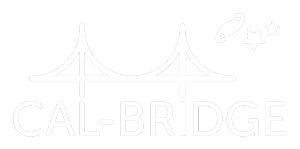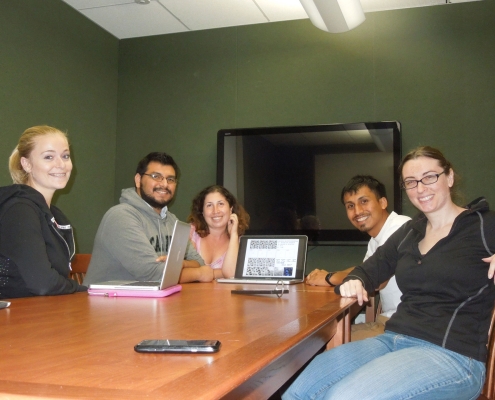What STEM disciplines does the Cal-Bridge undergraduate program support?
The Cal-Bridge undergraduate program currently supports students majoring in physics/astronomy, computer science/computer engineering, and mathematics/statistics. Other disciplines may be added in the future
Are students who intend to switch majors eligible to apply?
Yes, students who plan to switch to one of the eligible Cal-Bridge majors can apply
Is the Cal-Bridge undergraduate program limited to California State University students?
To be eligible, applicants must be attending a California State University by the fall of their year of entry into the Cal-Bridge program and for the remainder of their undergraduate career; this includes California Community College students transferring to a CSU
Does the Cal-Bridge undergraduate program provide assistance in writing personal statements, CV’s, statements of purpose, etc?
Personal and professional development workshops are one of the elements of success for the Cal-Bridge undergraduate program. Topics of these workshops include but are not limited to writing personal statements, statements of purpose, creating CVs, applying to internships and graduate schools, etc.
What is the frequency of the professional and personal development workshops and will they be in person or over Zoom?
There are three in-person weekend-long workshops for Cal-Bridge undergraduate scholars, including the Fall Conference. Additional virtual workshops on Zoom are held throughout the year, about one per month. All workshops are mandatory for all Cal-Bridge undergraduate scholars
Can I get help getting into a research or other internship in my discipline?
Cal-Bridge increases exposure to internship opportunities. In addition, as part of being a Cal-Bridge undergraduate scholar, you are required to apply to summer research opportunities including Cal-Bridge Summer, which provides research opportunities at UC campuses as well as nationally
What kind of financial support is offered?
Financial support is one of the four elements of success for Cal-Bridge undergraduate scholars. Students who are citizens or permanent residents and have completed a FAFSA, as well as AB540 students who have completed a California Dream Act Application are eligible to receive up to $15,000 of financial support per academic year. In addition, the Cal-Bridge undergraduate program provides financial support to pay for GRE testing fees, transportation costs to and from workshops, and graduate school application fees
What financial support is available for a Cal-Bridge scholar who enters a Master’s program in a related field?
Cal-Bridge has offered up to one year of financial support for Cal-Bridge undergraduate scholars entering a Master’s program after completing two years in the Cal-Bridge undergraduate program and who plan to reapply to PhD programs in the first two years of their Master’s program. However, such support is dependent on program funding and is not guaranteed
What financial support is available for a Cal-Bridge scholar who enters a PhD program in a related field?
The Cal-Bridge Doctoral program is designed to support scholars pursuing PhDs in STEM fields, with specific benefits tailored to their university affiliation. For those who matriculate into a UC PhD program, Cal-Bridge offers substantial financial assistance, including a $40,000 Cal-Bridge Fellowship* that is administered by the PhD program to support the scholar’s study and academic development. This crucial funding enables UC scholars to dedicate themselves more fully to their studies and research from an earlier stage in their doctoral journey, providing a strong foundation for their academic and professional growth. For more information about the Cal-Bridge Doctoral program visit that program’s webpage
*Cal-Bridge is committed to fully funding Cal-Bridge Fellowships, but the final number of fellowships and amount is contingent on overall program funding.
What are the four elements of success that Cal-Bridge offers?
The Cal-Bridge undergraduate program offers (1) mentoring via two mentors, one from your home CSU campus and one from a University of California campus; (2) financial support of up to $15,000 per academic year for qualifying students; (3) professional and personal development workshops; and (4) exposure to summer research experiences, primarily through the Cal-Bridge Summer program












